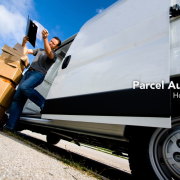The Three Biggest Mistakes Parcel Shippers Make!
Several key factors in today’s fast-paced business world are driving the explosive growth of online shopping. These factors, such as millennials, (and others for that matter),desire to shop on line, rather than in physical stores; the growth of entrepreneurs starting new businesses to sell just about anything online; and manufacturers needing to sell at the wholesale as well as at the retail level.
The net result of these factors and others, is more and more companies are utilizing parcel carriers to deliver their products to the ultimate consumer. With this growth comes a need and responsibility to clearly and thoroughly understand all of the rules, regulations, rates, shipping options and legal ramifications of dealing with the parcel industry as a whole. Today, we’d like to explain what we believe are the Three Biggest Mistakes Parcel Shippers Make.
- Not Benchmarking Competing Carrier’s Rates and Services– The first mistake we believe parcel shipper’s make is not understanding all of the options available to them from the ever-growing list of parcel carrier service providers. Time and time again we witness shippers who never step outside their comfort zone to interview, review and analyze various competing carrier services to benchmark whether they have a good deal or not. The reality is, if a shipper does not continually benchmark their services and rates they are paying, by default, they accept the status quo and oftentimes that means paying much more for transportation services than they really need to.
Yes, we thoroughly understand that switching volumes of business from a long time preferred parcel carrier may come with some implementation pain. However, if a parcel shipper does not test the competitive waters they may be boxing themselves into paying higher rates year after year. Another key point to take into consideration is service level comparisons. Oftentimes, regional parcel carriers can deliver products faster in certain lanes compared to some national carriers. What about USPS as an alternative? This is not your father’s Post Office any longer.
Some additional food for thought; do cable companies, home alarm companies, mobile phone service providers, and other service companies charge their longtime customers more for services than they charge their new customers? You bet they do and unless a parcel shipper analyzes all of the options available to them on an on-going basis, they will probably pay more year after year as well. If a parcel carrier feels they have a “lock” on a shippers business, (primarily because the shipper has never utilized a bid process to evaluate the benefits of competing carriers), what incentive would that carrier have to publish lower rates? That’s correct, absolutely none. The fact is the incumbent carrier may turn out to be the best choice for a particular shipper, but unless that shipper benchmarks services and rates of competing carriers, they will never ever really be sure.
- Read The Fine Print, and More– Most parcel carriers provide their shipper customers with a pricing agreement or contract which outlines the various services to be provided and the associated rates and charges they have agreed to assess for those services. Warning to parcel shippers! Don’t just sign the agreement without reading it thoroughly to make sure all of the terms and conditions are EXACTLY as you and the carrier agreed to. Here are several questions we would ask every parcel shipper who has recently negotiated a new pricing agreement or re-negotiated a contract with a parcel carrier.
- Did you agree to a Guaranteed Service Refund Waiver with your parcel carrier sales representative? No, then why is it now in your contract?
- What Dimensional Weight Divisor did you and the parcel carrier agree would be published? Is that the Divisor that is now published in your new contract?
- Do you understand that many parcel carriers make their contracts subject to provisions of a service guide that is not a physical part of the transportation contract you are signing?
- Do you know the parcel carriers can change the provisions of those service guides at will and do not need to specifically notify each and every one of the customers when they do?
- Parcel carriers typically provide differing pricing incentives for various service levels, are you sure all of the discounts and incentives have in fact been published exactly as you and the parcel carrier agreed to in your negotiation sessions
Why ask these questions? Precisely because for some parcel shippers these exact issues have arisen and many of these companies never identified them until it was too late; so our advice to all parcel and freight shippers for that matter is; Caveat Emptor, let the buyer beware!
And, one final point, a very important point; we strongly recommend that each and every parcel carrier contract, or any transportation or logistics services contract for that matter, should be reviewed by a qualified Transportation Attorney, before any of those contracts are signed.
- Continually Audit Parcel Carrier Invoices– Once the contract has been signed, all parcel shippers should ensure they have a qualified third party audit firm auditing each and every invoice to make sure the rates being charged are the rates the shipper agreed to in its pricing agreement or contract. The auditors will also be able to file for refunds for Guaranteed Late Delivered packages, as long as the shipper has not waived their right to file such claims.
Parcel Audit firms also provide on-line access to their client’s pertinent shipping data and can even report results based on specific Key Performance Indicators (KPI’s) their shipper customers agree to. They also provide continuous and meaningful reports on a variety of different metrics so the parcel shipper always has their finger on the pulse of what’s going on with their parcel shipping expenses. We’ve all heard the statement, “you can’t manage what you can’t measure” and unless your firm has the technical expertise to generate this critical shipping data in-house, outsourced parcel audit firms have all the reporting power a parcel shipper would ever need.





